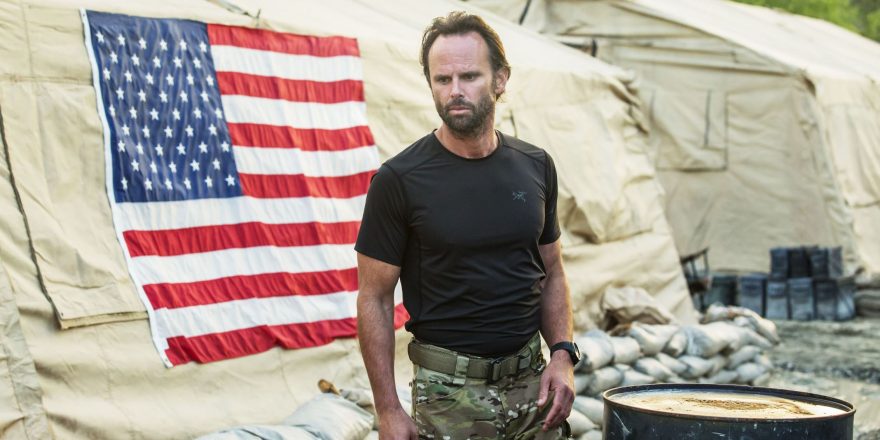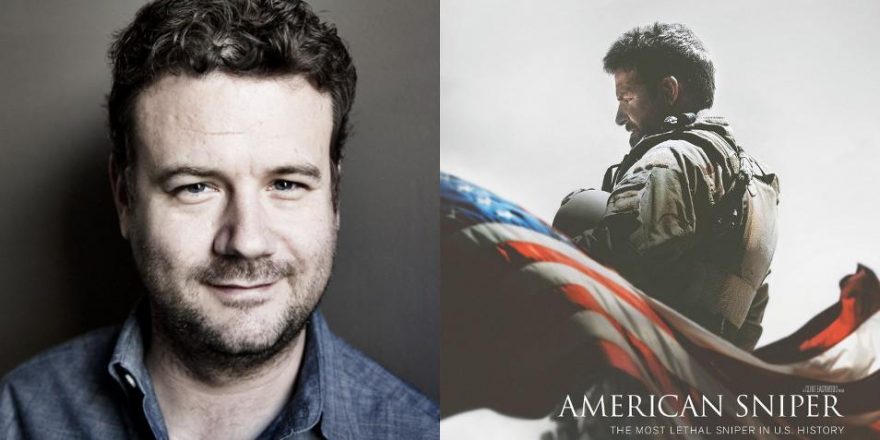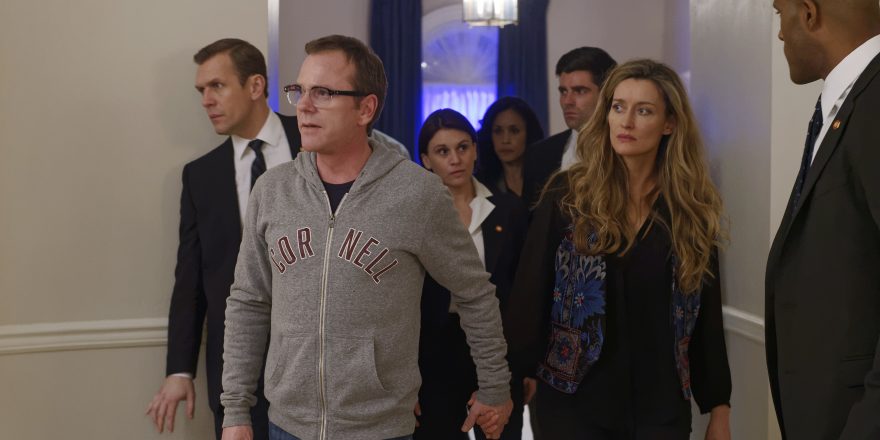One of the best pieces of filmmaking I’ve seen in months isn’t one of the big award season movies; in fact, it isn’t even a movie at all. It’s “Tour of Duty,” the third episode of the History Channel’s eight-episode limited series Six.
A drama that follows a fictionalized version of the real-life counterterrorism unit SEAL Team Six, Six is the brainchild of father-and-son writing team William and David Broyles, both of whom have military backgrounds and clearly supplemented their personal experiences with comprehensive research to create this series. Even after films like Zero Dark Thirty, Lone Survivor and American Sniper, the Broyles’ work stands out as a masterful journalistic account of the inner workings of a military unit – every scene feels immediate and authentic in a way that even the best films dealing with similar material don’t. There’s a real rigor to the details, not just in the writing but in the performances and in the design of the props, sets, and wardrobe, and these details not only inform the drama but create it – there are moments in the series in which the tension itself emerges from the specificity of how and why things work the way they do on the job.
Yet Six represents more than a mere accounting of technical and anthropological details, and it approaches the psychology of military operatives from a more oblique and interesting angle than what one finds in American Sniper and The Hurt Locker (both films I admire enormously). A clue to Six’s excellence emerges in the set piece that opens the series, in which Richard “Rip” Taggart (Walton Goggins) leads his team on an operation that ends with Rip shooting an enemy combatant (an American fighting for the other side) in cold blood. The action divides the men on Rip’s team, several of whom think Rip has lost his moral compass; the series then skips ahead two years, and Rip is no longer with the SEALs but working as a private contractor in Nigeria. Over the course of the next several episodes, we learn more about the circumstances of Rip’s departure – as well as the circumstances that lead to the night when he essentially commits a war crime – through an effective flashback structure.
The Broyles’ approach is clear right from that opening sequence; their show is to be a series of moral inquiry, but the moral questions aren’t asked or answered as cleanly as we’re used to in these types of stories. A film like Lone Survivor puts on the pretense of seriousness while raising “issues” that aren’t really issues at all – the movie never exhibits any honest ambivalence about the actions of its heroes. Even a far superior movie such as American Sniper hedges its bets by sanding off its protagonist’s rough edges and emphasizing his personal torment at the expense of virtually everything else in the story. The characters in these films not only always do the right thing, but exist in universes where the definition of what the “right” thing is is never truly in doubt. Even when the characters engage in controversial behavior, as in the torture scenes in Zero Dark Thirty, on the film’s own terms there’s no question of their righteousness; the deck is further stacked by the charismatic actors cast as our identification figures in all these movies.
Interestingly, Six was originally set to star Joe Mangienello as Rip, which would have tilted it closer to the Black Hawk Down/Zero Dark Thirty/American Sniper/Lone Survivor model. When Mangienello had to drop out for health problems, Goggins stepped in and transformed the show into something more unsettling and confrontational; he projects intelligence and authority, but he’s also got a wiry instability that lends a lot of credence to the idea that he might be a genuine madman. He’s not an easy surrogate for the audience like Mark Wahlberg or Bradley Cooper, yet his intensity is inviting in its own way – we understand why he divides his men even before we fully understand the context of what he’s done. Rip becomes both the center of the series and a sounding board for the other characters’ positions when he is kidnapped by Boko Haram; the show then becomes about his old unit’s efforts to rescue him, while on a parallel line of action the brother of the man he killed tries to get to him first.
Along the way, the show also addresses the personal lives of each of the SEAL team members, with both flashbacks and present-day digressions that complicate the already conflicted allegiances many of the men feel toward one another and their job – while the guys are all presented as loyal men who would die for one another, it isn’t in the simplistic, jingoistic manner one might expect. This is the kind of show that not only contains its own contradictions but allows each character to be contradictory as well, and thus weaves an elaborate fabric that not only respects multiple points of view but pushes them hard – the show is both boldly patriotic in a conservative sense and softly reflective in a liberal sense, with no effort made to soft-pedal either stance or any number of gradations in between. At times it makes for a slightly awkward viewing experience depending on one’s own political outlook, but this is where the show’s greatness derives from – it’s bold in a lot of ways that make the viewer feel uncomfortable and unsafe.
This approach makes Six a perfect fit for Kimberly Peirce, the director of its best (of the four I’ve seen thus far) episode, the aforementioned “Tour of Duty.” Peirce’s three features to date – Boys Don’t Cry (1999), Stop-Loss (2008), and Carrie (2013) – are all exquisitely calibrated portraits of extreme emotional crisis, movies about characters losing control in which Peirce’s own formal control remains supreme. Sophisticated and at times extreme shifts in perspective are her specialty; the criminally underrated Carrie is almost painfully empathetic not only to its title character but to many of her tormentors, as Peirce utilizes subtle camera placement and delicate direction of her actors to deepen, not cheapen, De Palma’s original take on the same material. In the case of “Tour of Duty,” she pulls off something extraordinary, applying a Kurosawa-esque mastery of space to her action sequences in a way that conveys the messy confusion of violence without losing visual clarity – the audience is always completely acclimated within the frame, yet still gets a sense of the visceral chaos as it’s experienced by the characters. This kind of thing is tougher than it looks – in fact, the harder a director works on it the easier it should seem – and Peirce’s command of composition, movement and cutting here is reminiscent of Spielberg’s work in Saving Private Ryan.
Peirce is also brilliant in the non-action scenes, such as a flashback sequence in which we see the dissolution of Rip’s marriage in a series of wordless images. Via a poignant, concise montage, Peirce and screenwriter Bruce C. McKenna depict a relationship moving from love to indifference and worse better than any filmmaker since Orson Welles did something similar in Citizen Kane – and the montage is all the more remarkable for doing multiple things at once, showing not only the disintegration of Rip’s marriage but the beginnings of his psychological breakdown at work. It’s a tour de force, but it doesn’t feel like a set piece when we’re watching it – Peirce is too confident in her own craft to show it off.
It’s only upon reflection and second viewing that one realizes how much is packed into her episode’s compact 42 minutes, particularly when it comes to the fluid viewpoints in her present-day scenes of Rip held prisoner – Peirce brilliantly and consistently manipulates camera position and depth of field to not only increase the tension but to shift power (both literally and figuratively) between Rip, his fellow prisoners, and their captors. She has an unerring instinct for knowing when to stay close to the action and when to pull back for context and contemplation, and this serves her – and the audience – well throughout the episode. “Tour of Duty” is a pivotal installment in the series, filled not only with action that moves the plot forward but with razor-sharp dialogue that nicely crystallizes the attraction-repulsion we’ve been feeling toward the characters all along. (Rip’s line “We get to break all the Ten Commandments and get away with it” is particularly effective in this regard.)
Peirce’s handling of the material is flawless, and all the more impressive in the way that she serves two masters – she completely fulfills all the expectations and requirements previously established by the series, yet merges the show’s preoccupations with her own to the point that it feels like an auteur work. As I write this, Peirce is at Sundance premiering yet another foray into episodic TV, the Amazon series I Love Dick; based on her achievement with Six, I can’t wait to see it.






